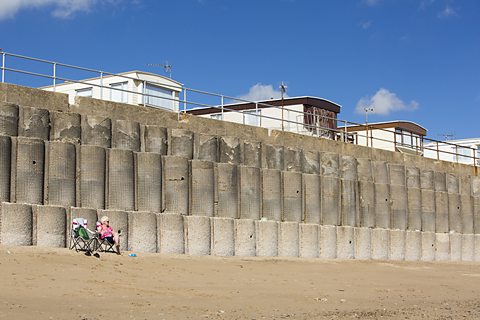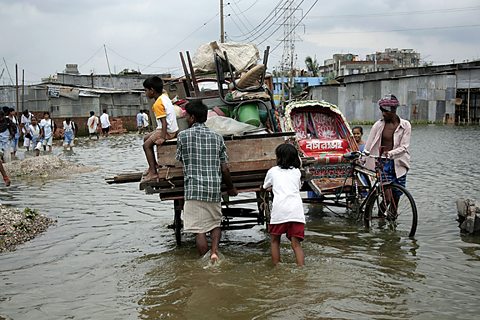Why are some coastal communities vulnerable?
There are three main factors which increase vulnerability at the coast - physical, social and economic.
Physical factors
- Severe weather - prolonged and regular spells of severe weather, such as gale-force winds, make some areas much more vulnerable than others.
- Natural hazards - unpredictable events, such as tsunami, are a major issue especially for countries which sit on or near to plate boundaries.
- Climate change - as the world warms (global warming), the polar ice caps are melting, which leads to a rise in sea level. This puts coastal areas under threat.
- The height of land and distance from the coast - some areas of land are actually sinking. With sea level rise set to increase by between 30 cm and 2 metres by 2100, low-lying areas are most vulnerable. Also, those who live directly on the coast are also in danger of landslides and the effects of coastal erosion.
- The rock type (geology) - soft rock erodes much quicker than hard rock which means areas in the east of England are often more vulnerable than areas in the west of the UK, where rock types are generally much harder.

Soft rock called boulder clay is extremely vulnerable to coastal erosion
Social factors
- Education - poorly or less educated people often find it more difficult to understand what to do, and to follow instructions or advice.
- Age and health - elderly people who struggle to move, or those who do not have the support from others. Pregnant women, children and people with disabilities are also extremely vulnerable.
- Population density - the more people who live in dangerous areas, the greater the threat.
- Time of day - if a natural disaster occurs during the early hours, many may be unable to flee as they may be asleep. If it occurs during the middle of the day or at rush hour, many people may become stranded.

A retired old age pensioner (OAP) who lives in a coastal location at sea level would be more vulnerable than a younger person who lives in a brick-built house, inland and at altitude
Economic factors
- The wealth of a person or community – unemployed people or people on benefits often can’t afford to protect themselves. In low income countries (LICs), the world’s poorest people often live in slums with houses made from scrap materials, which are unable to cope with bad weather.
- The quality of emergency services and coastal defences – many LICs can’t afford to protect themselves at all. High income countries (HICs) may struggle to build and maintain coastal defences in the long term because of budgets and other priorities.
- The quality of man-made structures to withstand the forces of nature - large structures in HICs are often designed to withstand weather extremes and some natural disasters. However, in LICs man-made structures are often poorly constructed and vulnerable.

A flooded community in Bangladesh